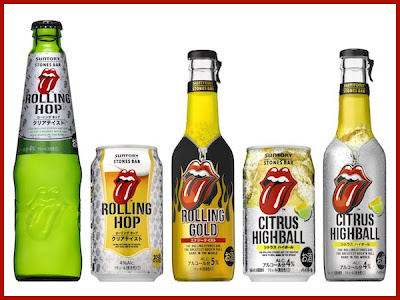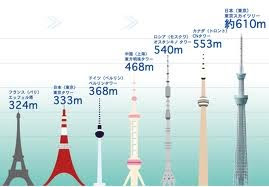::::::::::::::::::::::::::::::::::::::::::::::::::::::::::::::::::::::::::::::::::::::::::::::::::::
Additions in 2008
ukiukidango, ukiuki dango うきうきだんご / ウキウキ団子
"dumplings swimming buyoantly"Kuji, Chiba
jamu ジャム jam
maamareedo マーマレード marmalade
omuraisu オムライス omelette with rice filling, omusoba オムソバ omelette with Chinese fried soba noodles
tokoroten 心太, 心天 (ところてん) gelidium jelly
yamanashi、yama-nashi 山梨 (やまなし) "mountain pear" Malus sieboldii
obansai おばんさい / お晩彩 small dishes from Kyoto
Yamato-ni 大和煮 simmering meat of wild animals and whale
Kujria bento くじら弁当 Whale meat bento from Tateyama/Chiba
odorigui 踊り食いeating "dancing" small life icefish (shirauo)
Kyoto - famous dishes
including Kaiseki Ryori 懐石料理, kappoo ryoori 割烹料理 kappo food, kawadoko ryoori 川床料理, hamo 鱧 (はも) pike conger pike, pike eel and the Gion Festival, hon moroko 本諸子, imoboo 芋棒(いもぼう) , itokojiru いとこ汁, sabazushi 鯖寿司, sasamaki, sasa-maki, chimaki 笹巻き / ちまき; senmaizuke せんまい漬け / 千枚漬 pickled trunips; tochimochi, tochi-mochi 栃もち; yatsuhashi, nama yatsuhashi 生八ッ橋
Tenzo 典座 the Zen Cook Tenzo kyokun by Dogen Eihei Zenji
funaryoori 船料理 (ふなりょうり) food served on board a ship or boat
tonsho mochi 屯所餅(とんしょもち)"garrison mochi" in memory of the Shinsengumi 新選組 in Kyoto
minazuki 水無月 (みなずき) Kyoto sweets for June
Sea bream (tai 鯛) sakuradai, ma-dai and many more
Gangu 郷土玩具 Folk Toys
manjuu kui ningyo 饅頭食い人形 doll eating a manju bun
うるしコーヒー urushi koohii, "laquer coffee" from the laquer tree fruit
Ubatama 鳥羽玉 /老玉 "Black Lily Seed"
JULY NEWSPAPER
Food and Games 野菜かるた Karuta games and other card games
Amanatto (amanattoo) 甘納豆 sugar-glazed beans and Hamanattoo 浜納豆
Fujisan 富士山 and food specialities
Ichigo bentoo いちご弁当 Lunchbox with uni and awabi, sea urchin eggs and abalone
Hoorensoo ほうれん草 / 菠薐草 spinach
Sweets from the KANTO region
haabu ハーブ herbs, Gewürzkräuter
Togarashi,toogarashi 唐辛子 red hot pepper Shichimi Togarashi and more
Western vegetables used in Japan
Robots for Sushi and Okonomiyaki FOOMA (International Food Machinery & Technology Exhibition)
Ningyooyaki, ningyoyaki 人形焼 figure waffles
Daruma Daikon だるま大根 a radish named Daruma
Chokoreeto チョコレート chocolate with many tasts
Oyatsu お八つ . o-cha-uke 御茶請け afternoon snack
moyashi 萌やし、糵, もやし bean sprouts Bohnensprossen
moyashi udo もやし独活(もやしうど)sprouts of spikenard
Kobiru, cobiru, kobilu (こびる) 小昼 "small lunch", rural lunch
Takachiho, Miyazaki
. 葷酒山門(くんしゅさんもん)kunshu sanmon
Temple Gate, no garlic or liquor beyond this point!
Shookadoo Bentoo 松花堂弁当 Shokado Bento
karee raisu カレーライス curry rice Curryreis
Botamochi Jizo ぼた餅地蔵 Jizo Bosatsu, Botamochi rice cakes
Itoin Senbei, ito-in senbei いといんせんべい. 絲印煎餅 Senbei with a "stamp like a thread" . From Ise, Mie prefecture
gooya ゴーヤ bitter gourd Momordica charantia. Okinawa. karela in Hindi, India.
Cookies だるまクッキー
Daruma cookies sweets
satoimo, sato imo 里芋 taro roots Taro-Kartoffel
. . . . Zuiki matsuri ずいきまつり Taro and Vegetable Festival
and more about the Zen priest Muso Kokushi 夢窓国師 !
JUNE NEWSPAPER
Jagaimo 馬鈴薯 (じゃがいも) potato, potatoes
Kartoffeln
Red Beans, "small beans" , adzuki (azuki 小豆 )
udo 独活 (うど) udo Aralia cordata
Goheimochi 五平餅 and other food from Nagano
Dengaku 田楽 dance and food
Gyuuniku 牛肉 beef wagyuu, wagyu 和牛 Japanese beef
Momofuku Ando Instant Ramen Museum
(インスタントラーメン発明記念館)
Ika Daruma Ika Surume だるまいか / いかだるま Daruma Cuttlefish
Tosa Nikki, Tosa Diary by Kin no Tsurayuki ... and some manju sweets
Vegetables from SPRING ... List
Myoga Ginger (myooga) 茗荷 (みょうが). Zingi-Ingwer
Miyajima Ekiben 宮島駅弁 Miyajima Stationlunch Anagomeshi あなごめし
Miso みそ or 味噌 Miso paste and miso soup and miso culture
Shimonoseki 下関駅 。gansoo fukumeshi 元祖ふくめしthe original puffer fish with rice EKIBEN
hamo 鱧 (はも) pike conger pike, pike eel Muraenesox cinereus. dragontooth
Horegusuri ほれぐすり(惚れ薬, 惚薬) love potion Liebestrunk
Hanakae Matsuri 花換祭 / 花換祭り Flower-exchanging festival at shrine Kanesaki-gu, Fukui prefecture, and the sakura cherry blossom cookies 桜クッキー
Fu, Wheat gluten (fu 麩) and FU products
Soba ryoori そば料理 dishes with soba Buckwheat noodles
Wagashi Sweets from Kanazawa 金沢に和菓子
Salty Sweets (shioaji suiitsu 塩味スイーツ)
sweets with a flavor of salt, Süßigkeiten mit Salz
Hanabatake Bokujoo 花畑牧場 in Hokkaido nama kyarameru ”生キャラメル”fresh caramels, weiche Karamellen
Kaki 柿 Persimmon Persimone. Sharon fruit.
Uiroo 外郎 ( ういろう) jelly sweet Aichi and Odawara
hooba miso, Hoba Miso ほうばみそ miso paste served on a hoba leaf hooba 朴葉 ... Magnolia obovata
Ebisu sama 恵比寿様. Deity of the Fishermen
"Frost Shrine" 霜神社 Shimo Jinja, Shimomiya at Mount Aso, KyushuThe legend of Kihachi 鬼八
Konnyaku plant and food (Amorphophallus konjac) . Elephant jam
Mandala Food Arrangements (hoshamori, hooshamori 放射盛り)
Gotoochi Gurume ご当地グルメ Cheap local specialities
kankoo gurume 観光グルメ, tourism gourmet
bii kyuu gurume B級グルメ B-class gourmet food
mamushi まむし (蝮 ) poisonous snake 日本蝮 (ニホンマムシ)
Morning Market (asa ichi, asa-ichi) Morgenmarkt
Wasabi 山葵 green horseradish . yamawasabi 山わさび white horseradish
Hirome seaweed (hirome (ひろめ) 広布 / ヒロメ) Oita prefecture
Sushi decorations and vocabulary 寿司の盛り方
corbicula from Seta (Seta shijimi) and the Big Bridge at Seta 瀬田の唐橋
Tenmusu 天むす rice balls with tempura
Roadside stations (michi no eki 道の駅) Highway Service Areas
Mottainai もったいない モッタイナイ Do not waste food !
Garlic (ninniku 蒜 (にんにく(ニンニク)) ) Knoblauch
Gyooza, gyoza ギョーザ / 餃子 Jiaozi Chinese dumplings
Pan パン bread
toosuto トースト toast
Shark 鮫 (さめ) same Haifisch
Ninaibako 荷担箱 Box to carry sweets to the Shogun Kameyama sweets
Yakuzen, yaku-zen 薬膳 ( やくぜん) "Eating Medicine" medicinal food dishes and Traditional Chinese Medicine (TCM)
Edo Yasai, Edo dentoo yasai 江戸伝統野菜 Traditional vegetables of Edo
Umeboshi 梅干 dried pickled plums Salzpflaumen
Iwashi 鰯 (いわし) sardine Sardinen, Anchovy.
urume small herring
Regional Sashimi ... LIST
Regional and local sushi types ... a LIST only
Yamamori Goboo Festival 山盛りのゴボウ / ごぼう講 at Kuninaka in Echizen, Fukui. Eating lots of Burdock.
TEN GU jiru, tengujiru 十具汁 TENGU soup
Oomi Beef in the Edo period Ii Naosuke and Mito no Nariaki
Osaka Fugu Hakubutsukan ふぐ博物館 Osaka Blowfish Museum Pufferfisch, Kugelfisch
warabimochi 笑来美餅 mochi with bracken powder
Adlerfarn-Mochi
momiji tenpura もみじ天ぷら/ 紅葉の天ぷら sweet tempura from maple leaves from Mino town, Osaka
Tempura von roten Ahornblättern
"Tokyo Taste — the World Summit of Gastronomy 2009"
Ishimatsu manjuu 石松まんじゅう Manju in memory of Ishimatsu From Konpira-San, Kotohira Shrine in Kagawa, Shikoku
iburi いぶり, ibusu 燻す to smoke, smoking, smoked food kunsei 薫製
iburi gakko いぶりがっこ smoked radish pickles from Akita
Day of Meat (niku no hi) Febraruy 9, NI KU
Ehomaki Sushi Roll (ehoomaki) for February 3, Setsubun
Quail and quail eggs (uzura no tamago うずらの卵) Wachteleier
wasanbon 和三盆 Japanese sugar and other sweets from Shikoku
wasanbon 和三盆 Japanischer Zucker . All kinds of brown and black sugar. kurosato 黒砂糖
onimanjuu, oni manjuu 鬼饅頭 おにまんじゅう "devil's cakes" for Setsubun, February 03.
Kanbutsu 乾物 kambutsu dried food items Getrocknete Lebensmittel
Yakumi やくみ (薬味) spices and condiments Gewürze
warigo bentoo わりご弁当 lunchbox for the village kabuki ... Shodoshima, Kagawa
Juken fuuzu 受験フーズ Juken Food for the Examination Hell
Shikoku Sweets 四国スイーツ Sweets from Shikoku
Gifu Prefecture ... Regional Dishes
katsuo no ipponzuri 鰹の一本釣り fishing for skipjack tuna in Kochi, Tosa, Shikoku
and related dishes
Museums, Food Museums and Food Theme Parks
Kyuushoku 給食 School Lunch Schulspeisung, Schulessen
Kyooyasai, kyoyasai, kyosai 京野菜 / 京菜 Vegetables from Kyoto.
Gemüse aus Kyoto, Kyoto-Gemüse
Rural Culture Association 農山漁村文化協会 農文協 The BEST online resources !
Shokuyoo no hana 食用の花 Edible blossoms, edible flowers
kushigaki 串柿 ( くしがき) dried persimmons on a stick
town of Shigo, Katsuragi, Wakayama
Collagen Nabe コラーゲン鍋 Hodgepodge with collagen ... for beautiful skin ?
anpanman アンパンマン Mister Anpan
toshikoshi udon 年越しうどん udon noodles, eaten to "pass over into the new year"
Minamoto Kitchoan 源 吉兆庵 Seasonal Sweets and Daruma sweets, Kamakura
Daruma Senbei for the New Year 干支せんべい 2009
Daruma Manju だるま饅頭 (Daruma Manjuu)
Natural Ice for drinks ... declining
December 09, 2008
Samurai Cooking
Tsubaki abura 椿油) camellia oil
cha no hana 茶の花 (ちゃのはな) tea blossoms
Joodoo-E Ceremony 成道会 Daikodaki Cooking Radish Soup to ward off evil
December 8 at Shakado Temple in Kyoto
Yomogi よもぎ 蓬 mugwort Beifuss, Beifuß
Shigure no Matsu 時雨の松 Pine in icy rain, a Haiku Sweet
Ecotarian Food エコタリアン
Waseda Kankyo Juku 早稲田環境塾 Waseda School of Environment
Hachimitsu 蜂蜜 はちみつ Honey, Honig
Red Beans, "small beans" (azuki 小豆 ) and DARUMA
Tanada no Udonya 棚田のうどん屋 . まーちゃんうどん Ohaga no Tanada 大垪和の棚田
nonbee 呑兵衛 (のんべえ) Nonbei, nombei, drinker, alcoholic Trinker, Alkoholiker
yukishio, yuki shio, yukijio 雪塩 snow-salt from Miyakojima Island. Salt (shio)
McDonald's and Mr. James Mr.ジェームスのブログ
Takuan, takuanzuke 沢庵漬 (たくあんづけ) Takuan radish pickles and Priest Takuan Soho
Shiitake, maitake, matsutake, nameko and many other mushrooms Mushroom (ki no ko, kinoko), dobin mushi
Chuukanabe, wok 中華なべ 囲炉裏鍋, irori nabe, donabe earthen pot and more pots and pans
Mogura daikon もぐら大根 "mole radish" and other dishes from Gunma prefecture
Teppanyaki 鉄板焼き fried (or grilled) on an iron plate or pan and other fried or grilled food, yakiniku 焼き肉
oyaki, o-yaki おやき , お焼き, 御焼(き)grilled dumplings with vegetables
mit Gemüse gefüllte Reisküchlein
Italian food イタリアン料理 Spaghetti, Pizza, Pasta, Doria, Pesto
ramune ラムネ lemonade and other Summer Drinks
biiru ビール
beer : Bier and local beer (jibiiru 地ビール)
budooshu ぶどうしゅ、葡萄酒 wine
shinsen 神饌(しんせん) Shinto - Food offerings
shirasu elvers . しらすの釜揚げ boiled shirasu from Shonan
Rakkasei 落花生 (らっかせい) Peanuts from Chiba
FAGI FOODS ファジフーズ Fagiano Okayama ファジアーノ岡山
Miele Guide of Asian Restaurants ミーレガイド
Miele KITCHEN(ミーレ・キッチン)
gekiyasu bentoo 激安弁当 extremely cheap lunchbox
Osaka no kui-daore くいだおれ kuidaore
hamakonabe, hamako nabe 浜子鍋 hodgepodge for the "beach children" Hiroshima
Shoochuu 焼酎 (しょうちゅう) Shochu
strong distilled liquor, Schnaps
Haneki shibori sake 撥ね木搾り(はねぎしぼり)酒
Yakimochi Fudoo Son 焼き餅不動尊in Gunma
"salt road" 塩の道 shio no michi
from Niigata to Matsumoto, Nagano
Firefly squid (hotaruika, hotaru ika ホタルイカ(蛍烏賊))
Squid, cuttlefish dishes (ika ryoori イカ料理, 烏賊料理)
Chinmi and fish roe dishes
Bean curd (tofu, toofu, dofu 豆腐) and haiku
Mamakari ままかり Fish dishes from Okayama
Koohii 黒だるまコーヒー Black Daruma Coffee
kankoro かんころ 甘古呂 flower from sweet potatoes
kankoro dango かんころ団子
kankoro soba かんころそば
kinpira キンピラ simmered root vegetables
Uni 海胆 (うに) sea urchin and sea urchin roe (uni 雲丹)
Satsumaimo, satsuma imo 薩摩薯(さつまいも)sweet potatoes
Horse meat, baniku (ばにく/ 馬肉)
Kenchinjiru けんちんじる(巻繊汁) vegetable soup from temple Kenchoji, Kamakura
God of Cooking, Iwakamutsukari no Mikoto 磐鹿六雁命
History of Japanese Food Culture
Issunbooshi bentoo 一寸法師弁当 Issun-Boshi Bento for Tom Thumb
Gokuraku Onkei 極楽温鶏 whole steamed chicken from Oita 極楽温鶏
BUTA ... Pig and Pork (buta, ton 豚 ぶた)
Daietto ダイエット Diet and fasting ... the extreme : Sokushinbutsu 即身仏
Manga, Anime and Japanese Food Culture
料理漫画. 料理アニメ. グルメ漫画
Dishes from Tokyo 東京
Wrapping Paper Art / Food Art
Ramen, raamen ラーメン Chinese noodle soup
Hakata no shio 伯方の塩 salt from Hakata island
Sweets from Hokkaido 北海道スィーツ Hokkaido Sweets
Ainu Dishes, Hokkaido アイヌ料理
Tosa no Inaka Sushi 土佐の田舎寿司 sushi from the countryside of Tosa
Kagawa dishes 香川 Shikoku Takamatsu, Shodoshima
World Tasty Museum 世界食文化博物館 Imabari, Ehime. Nihon Shokken
Rokuben, Bento for a kabuki performance ろくべん, 大鹿歌舞伎 Nagano.
Famine and Hunger periods during the Edo period . kikin 飢饉
Sweets from Tohoku 東北の甘いもの
Tottori dishes 鳥取
Recycle, Reuse, Re-use Wiederverwendung von Lebensmitteln
Yam 長芋, Taro 里芋 and sweet potatoes 薩摩芋 Dioscorea japonica. Colocasia esculenta. Ipomoea batatas.
Shooyu purin 小豆島醤油プリン Soy Sauce Pudding from Shodoshima
Kani 蟹料理 CRAB dishes
Oiri, yomeiri おいり 嫁入り sweets for the bride
Kamaboko (蒲鉾, かまぼこ) Fish paste, fish cake, ground fish on boards
Cooking methods : yaku and ...yaki
Kitaoji Rosanjin (北大路魯山人)
UTSUWA うつわ【器】, vessel or dish
hassunzara, hassun sara 八寸皿 Hassun-plate for kaiseki
hirazara ひらざら【平皿】 flat dish
kakuzara かくざら【角皿】 plate with four corners
kareezara カレー皿 plate for curry rice
sara, ban さら 【皿・盤】 plate, dish, saucer, platter
kozara 小皿 small plate
torizara 取り皿 small plate
ukezara 受け皿 saucer
hachi はち【鉢】 bowls of all kinds
daibachi 大鉢 big bowl
fukabachi 深鉢 deep bowl
kakubachi 角鉢 square bowl
katakuchi bachi 片口鉢 bowl with a spout on one side
kobachi 小鉢 small bowl
mamebachi 豆鉢 very small bowl
meshiwan めしわん【飯椀/飯碗】 bowl for rice
tonsui とんすい small bowl with a handle
cups : kappu カップ cup
sakazuki 杯/ さかずき small cup for hot sake
yunomi 湯のみ(湯呑み) small tea cups.
::::::::::::::::::::::::::::::::::::::::::::::::::::::::::::::::::::::::::::::::::::::::::::::::::::
WASHOKU ... SEASONAL DISHES SAIJIKI
WASHOKU : Regional Japanese Dishes
. WASHOKU
NEWSLETTER 2010
Monthly FOOD JOURNAL
JANUARY ... ichigatsu 一月
WKD ... Latest KIGO Additions
WorldKigo Database ... ABC INDEX
:::::::::::::::::::::::::::::::::::::::::::::::::::::::::::::::::::::::::::::::::::::::::::::::::::
:::::::::::::::::::::::::::::::::::::::::::::::::::::::::::::::::::::::::::::::::::::::::::::::::::::
SEARCH all my articles

:::::::::::::::::::::::::::::::::::::::::::::::::::::::::::::::::::::::::::::::::::::::::::::::::::::
:::::::::::::::::::::::::::::::::::::::::::::::::::::::::::::::::::::::::::::::::::::::::::::::::::::
























